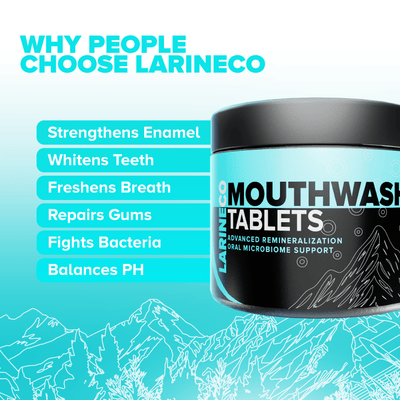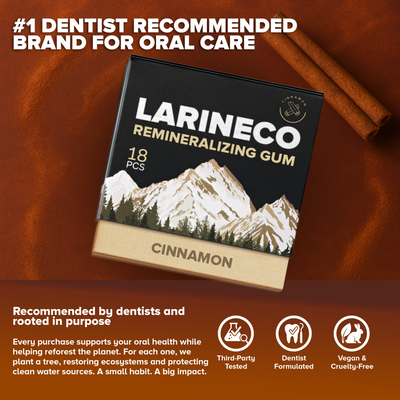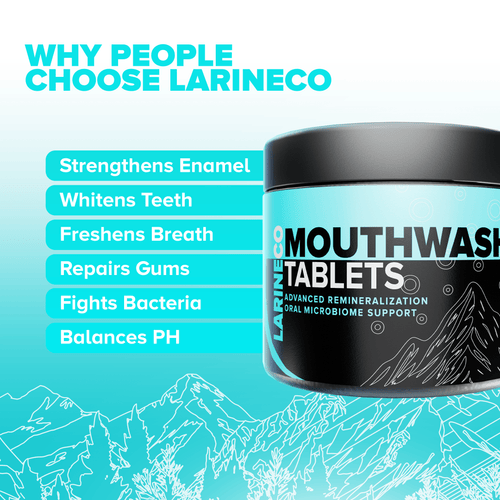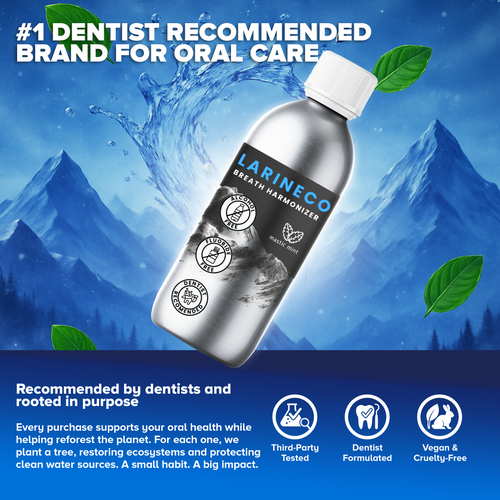How Saliva’s Acidity Level Determines Hydroxyapatite’s Remineralization Efficiency
Why Saliva’s pH Matters More Than You Think
The Unsung Hero of Oral Health
Saliva is one of the most overlooked components in oral health, often mistaken for just “spit.” But biologically, it’s a sophisticated fluid with essential roles. Beyond keeping your mouth moist, saliva acts as a buffering system, a natural cleanser, and a critical mineral delivery mechanism.
It contains enzymes, bicarbonates, calcium, phosphate ions, and antimicrobial compounds, all of which help neutralize acids, wash away food debris, and keep harmful bacteria in check. Perhaps most importantly, it acts as a carrier for minerals such as calcium and phosphate, which are essential for rebuilding enamel through remineralization.
Saliva also plays a central role in maintaining the microbial balance of your mouth. When pH and saliva flow are optimal, good bacteria thrive and suppress harmful, acid-producing strains. When saliva is compromised through dehydration, stress, medications, or diet, your oral ecosystem becomes more vulnerable to decay, erosion, and disease.

Understanding the pH Scale in the Oral Cavity

The pH scale ranges from 0 (very acidic) to 14 (very alkaline), with 7 being neutral. A healthy mouth should hover around a neutral pH between 6.8 and 7.4. But this can fluctuate throughout the day based on what you eat, drink, and how stressed or dehydrated you are.
After consuming sugar, acidic foods, or coffee, your oral pH can drop below 5.5, a critical threshold known as the “demineralization zone.” At this point, the enamel, the hardest substance in the human body, begins to dissolve. And once that protective layer erodes, it's a gateway to cavities, sensitivity, and long-term structural damage.
Even high-protein or high-fat diets (like keto) can influence saliva pH by altering your body’s acid-base balance. Chronic stress and mouth breathing also lower pH by reducing saliva flow and buffering capacity. Simply put, the lower the pH, the higher the risk of tooth decay and enamel erosion.
Saliva as the Natural Buffer Against Demineralization
Your body doesn’t passively let enamel dissolve. Saliva defends it by supplying bicarbonate ions (which neutralize acids) and phosphates and calcium (which can redeposit into enamel). This is why saliva is referred to as the primary line of defense against acid attacks.
In an optimal environment, when saliva pH is around 6.8–7.4, the minerals in your saliva and in oral care products like hydroxyapatite can remineralize the enamel surface. But when pH drops below 5.5, the process reverses, and the tooth begins to lose minerals instead.
Have you ever noticed dry mouth, heightened sensitivity, or persistent bad breath? In that case, chances are your saliva's buffering system isn’t working efficiently. These are often signs of an acidic imbalance in the oral cavity, which impairs natural remineralization.
Hydroxyapatite and the Remineralization Equation
What Is Nano-Hydroxyapatite and Why Does It Matter
Nano-hydroxyapatite (nHAp) is a synthetic form of the natural mineral that makes up over 95% of tooth enamel and bone. What makes it revolutionary in oral care is its bioidentical structure, meaning it mimics the body’s own enamel so precisely that your teeth readily accept and integrate it during the remineralization process. Unlike fluoride, which works indirectly to attract calcium and phosphate ions, nano-hydroxyapatite delivers the exact minerals your enamel is made of, in a form that bonds directly to the tooth surface.

The “nano” size refers to particles that are 20–100 nanometers in diameter, small enough to penetrate microscopic surface defects, enamel pores, and early-stage cavities. This allows it not only to remineralize but also to physically repair the tooth’s surface, restoring smoothness, brightness, and resistance to decay. Its biocompatibility also means there’s no risk of toxicity if swallowed, making it ideal for children, pregnant women, and those avoiding fluoride for personal or health reasons.
Clinically, when comparing nHAp and fluoride, nHAp has shown comparable or superior results to fluoride in strengthening enamel, reducing sensitivity, and improving surface gloss. But its efficiency doesn’t happen in isolation. It depends on the environment in which it’s applied, especially the pH of the mouth.
The Chemistry Between Hydroxyapatite and pH
To understand how hydroxyapatite works, you need to understand the role of pH in mineral exchange. In a healthy mouth, the pH level of saliva hovers around 6.8 to 7.4, a range that supports remineralization. This is the “sweet spot” where calcium, phosphate, and hydroxyapatite can deposit onto enamel and reinforce its structure. But when the mouth becomes acidic (below pH 5.5) due to sugary foods, coffee, soda, or simply low saliva flow, demineralization kicks in. In this state, the enamel starts to lose minerals faster than they can be replaced.
In acidic conditions, hydroxyapatite becomes unstable. It either dissolves back into solution or is prevented from bonding to the tooth surface. That means even if you’re using the most advanced remineralizing agents, they won’t work efficiently unless your oral environment is conducive to mineral uptake.
This makes pH not just a passive background factor but a critical chemical gatekeeper for whether nHAp can do its job. If the environment isn’t right, you’re pouring minerals into a system that can’t use them.
When Remineralization Doesn’t Work and Why pH Is Usually to Blame
Many people try remineralizing toothpaste or chewing gum, expecting dramatic results, but see minimal improvement. Often, the issue isn’t the product; it’s the oral conditions they’re using it in. A persistently acidic mouth (from snacking, mouth breathing, dehydration, or stress) limits nHAp’s functionality. The minerals might be present, but the enamel isn’t able to accept them due to the pH being too low or fluctuating too often.
Common issues like frequent eating or sipping keep the mouth in a chronically acidic state. Mouth breathing reduces saliva flow and dries the tissues, limiting the buffering capacity that would normally bring the pH back to neutral. Low saliva flow caused by medications, age, or travel-related dehydration further compounds the problem.
In this context, supporting saliva’s natural buffering power becomes just as important as applying remineralizing agents. Hydration, smart snacking, and gum-chewing with alkalizing, saliva-stimulating ingredients can create the right conditions for nHAp to work. If the pH isn’t right, remineralization won’t happen, no matter how good the formula.
The Role of Chewing in Saliva Stimulation and pH Regulation
Chewing = Saliva Flow = Better pH
The simple act of chewing does more than help you break down food; it activates one of your body’s most powerful natural defenses: saliva. Mechanical stimulation from chewing sends signals to the salivary glands, ramping up saliva production within seconds. This increase in saliva flow plays a pivotal role in pH regulation, enamel repair and remineralization, and oral cleansing.
After meals, especially those high in carbohydrates or acidic foods, your mouth becomes a temporary acid bath. The pH can drop below the critical level of 5.5, putting enamel at risk of demineralization. Chewing sugar-free gum after eating has been clinically shown to raise oral pH back toward neutral (around 6.8 to 7.4), restoring a safe environment for enamel.
More saliva doesn’t just dilute acids. It supplies essential minerals like calcium and phosphate, strengthens enamel, buffers harmful bacteria, and washes away leftover food particles. Chewing, then, becomes more than habit or hygiene; it becomes a functional tool for preventing cavities, protecting enamel, and maintaining microbial balance.
Choosing the Right Chewing Gum for Remineralization
While chewing is beneficial, not all gums are created equal, and some can do more harm than good. Many mainstream gums contain sugar, citric acid, or artificial sweeteners like aspartame, all of which disrupt the oral pH balance and feed acid-producing bacteria. Even "sugar-free" gums aren’t always pH-friendly.
For genuine remineralization benefits, look for gum with functional ingredients that support both saliva stimulation and enamel repair:
-
Xylitol: A natural sugar alcohol that reduces harmful bacteria like Streptococcus mutans and actively helps prevent plaque buildup. Xylitol is non-fermentable, so bacteria can’t use it to produce acid. Xylitol is better compared to other natural sugar alcohol alternatives.
-
Nano-Hydroxyapatite (nHAp): A bioidentical mineral that mimics the composition of natural enamel. These nano-sized particles penetrate microscopic lesions in enamel and bind to the tooth surface, promoting true structural remineralization, not just surface hardening.
Texture and chew time also matter. A slightly firmer gum encourages longer chewing, which stimulates more saliva and extends the remineralization window. Ideally, chew for 15–20 minutes after meals or snacks for maximum benefit.
In short, the act of chewing, when paired with the right gum formulation, becomes a biological trigger for oral health. It’s a simple, portable, and effective strategy to buffer acids, stimulate remineralization, and keep your enamel intact between brushes.
How Larineco Maximizes Remineralization by Addressing the pH Factor
Our Formulation Philosophy: Support Natural Systems, Don’t Override Them
At Larineco, we take a systems-based approach to oral health. Instead of fighting the body with synthetic compounds or harsh chemical agents, we work with it, amplifying what’s already built into our biology. Your saliva, for instance, is one of the most powerful tools for maintaining oral health. It’s naturally equipped to regulate pH, transport minerals like calcium and phosphate, and neutralize harmful acids.

Our formulation strategy is simple but science-led: Don’t override what the body is already trying to do, support it. That’s why we avoid fluoride, alcohol-based rinses, and synthetic antibacterials. These may offer temporary effects but often come at the cost of disrupting your oral microbiome, drying out your mouth, or interfering with natural remineralization cycles.
Instead, every Larineco product is designed to fit within your body’s existing systems. Whether it’s through gentle pH balancing, targeted bioavailable minerals, or microbiome-friendly botanicals, we make sure our products work with your saliva, not against it.
Why Nano-Hydroxyapatite + Xylitol Is Our Core Combo
We chose nano-hydroxyapatite (nHAp) and xylitol as the foundation of our oral care products, not because they’re trendy, but because they’re synergistic and clinically backed.
Xylitol does more than sweeten: it inhibits Streptococcus mutans, the main cavity-causing bacteria, and increases saliva flow. More saliva means better pH regulation, which in turn creates a more favorable environment for enamel repair.
Meanwhile, nano-hydroxyapatite, a bioidentical mineral to the natural hydroxyapatite found in enamel, fills in microscopic gaps and lesions caused by demineralization. But here’s the key: nHAp only works effectively when saliva pH is within the optimal range (typically 6.8–7.4). In acidic environments, the remineralization process is disrupted or even reversed.
By combining these two ingredients, Larineco creates an oral ecosystem where:
-
Acids are neutralized.
-
Bacterial growth is minimized.
-
Mineral delivery to enamel is optimized.
This is why the combo matters; they don’t just coexist; they amplify each other’s effects.
Clinically-Informed, pH-Aware Oral Care
At Larineco, we don’t just formulate based on trends; we formulate based on clinical evidence and biological reality. Our remineralizing gum formulations are developed and tested with pH optimization in mind. That means:
-
Every ingredient is screened for its impact on oral pH.
-
The final product must support, not disrupt, the salivary ecosystem.
-
We formulate within the window where hydroxyapatite remineralization is most efficient.
And we’re not stopping there. Our R&D continually monitors emerging science around pH, the oral microbiome, and biomimetic minerals to evolve with the data. That’s our commitment to both innovation and integrity.
We believe that oral care shouldn’t be reactive. It should be intelligent, designed to help your body perform its natural defenses more efficiently.
The Takeaway: Support Saliva, Balance pH, Restore Enamel with Larineco.
At the end of the day, remineralization isn’t just about what you apply. It’s about what your body can do with it.
Larineco doesn’t just throw ingredients at your teeth; we engineer products around your body’s natural systems. We respect saliva. We design for pH balance. We think through context: where you are, what you’re eating, and how often you’re able to brush.
So if you want to:
- Reduce enamel erosion,
- Strengthen your teeth naturally,
- And maintain a resilient, healthy mouth wherever life takes you.
Then trust a brand that thinks with your biology, not despite it.
Larineco: Where enamel repair meets design thinking.
Because healthy saliva = healthy enamel. And we help you get both, naturally.










